If our trip to Australia three years ago was one of awe and wonder, this time we were able to settle down and catalog the similarities rather than dwell on the differences.
This time it was "I remember this" with a certain comfort in that our memories had not failed us.
This time we were able to enjoy.
We started our adventure in Melbourne, Victoria, a large, cosmopolitan city which hosts the Australian Open. Had, in fact, just hosted it, which I think accounted for the fact that there were no Starbucks city/country mugs to be had for my collection. None. Not one. Not in any of the block-apart Starbucks stores in the Central Business District. (That's the CBD and yes, they really call it that.)
It's a city of beautiful old churches with outstanding brick work.
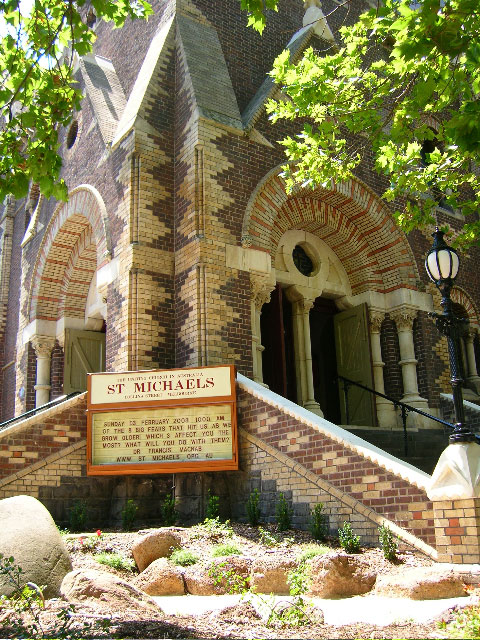
The Saturday afternoon CBD was as crowded as a Saturday afternoon mall in Texas and we had a very good time looking at the art work and listening to the local musicians. We found a grocery store, a coffee shop or two, and in general behaved like tourists who had just come off a very bumpy 15-hour flight, lost a day in the process, and, in self-defense, weren't about to go to bed until nighttime.
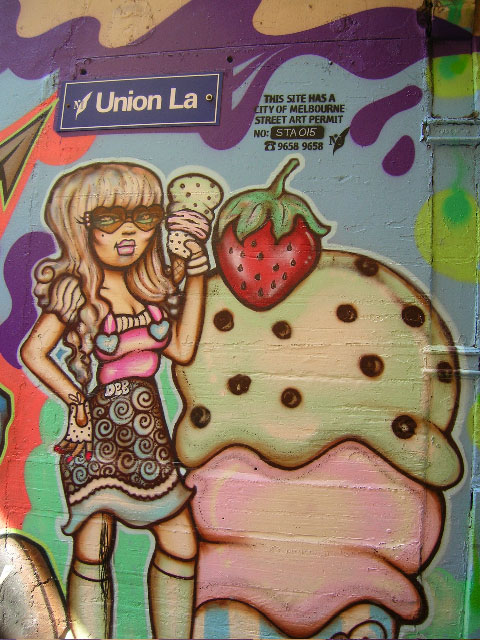
Melbourne: From an art-work filled alley in the CBD.
But the real adventure didn't begin until we rented a car. Like the
English, the Australians drive on the "wrong" side of the road, from
the "wrong" side of the vehicle, and with the windshield wipers and
turn signals reversed. It was the latter that caused us the greatest
consternation and frustration as we set out on one of the world's
most scenic routes, the Great Ocean Road.
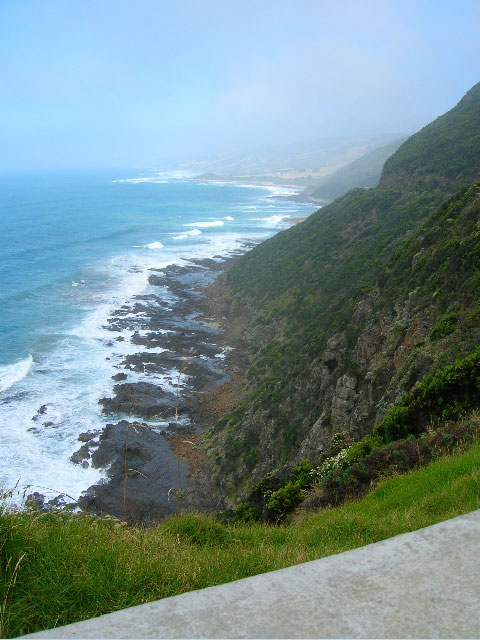
Completed in 1932, after fits and starts for over a decade, it was
initially financed by a trust with funding from the Returned Services
League and local communities, as the state government was reluctant to help. It now serves as a memorial to the Victorians who served in World War I and to the 3000 men who built it. It is indeed
magnificent. Twisting between seashore and mountain, it runs along
the bottom of the state of Victoria, and showcases the Southern Ocean.
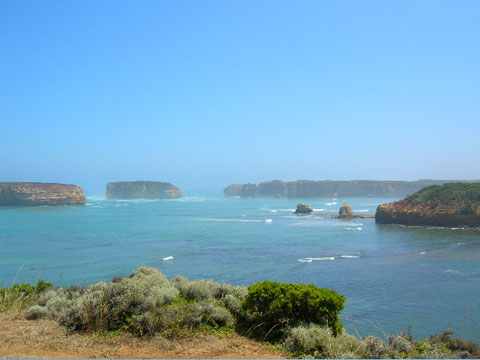
Near the western end of the GOR is Port Campbell National Park and the Twelve Apostles (although as of July 2005 there are only 11, one of them having crumbled), rock formations almost close enough to touch, but shrouded in mist the morning we were there.
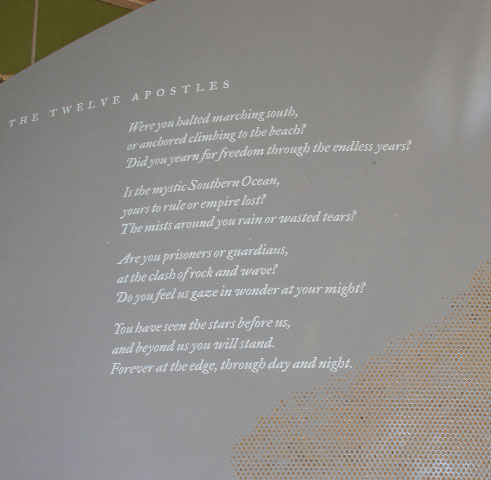
From the visitor information center, Port Campbell National Park, Victoria.
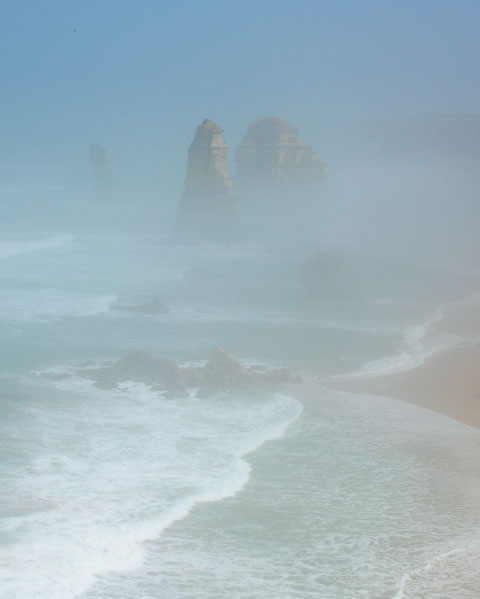
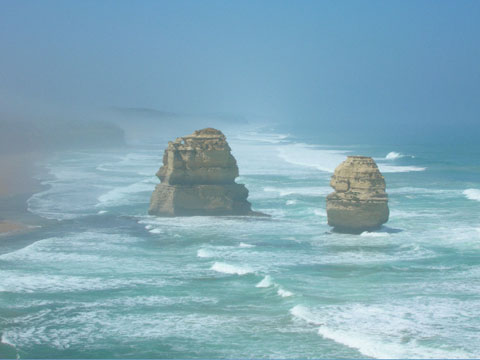
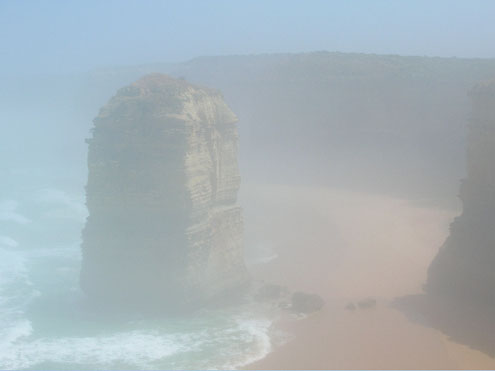
Leaving the GOR, we encountered the Limestone Coast. While not as noted (to us) as its Victorian counterpart, there was plenty to see,
particularly in the picturesque town of Robe. The Obelisk, visible 12
miles out at sea, was a shipping marker built in 1855 to help guide
ships, as this coastal area is also widely known as the Shipwreck
Coast. Another interesting marker honored the 16,000 Chinese who put ashore in the 1850's and walked to the gold fields 200 miles away, rather than pay the $20/person landing fee which would have been charged had they arrived in Melbourne, much closer to the gold areas.
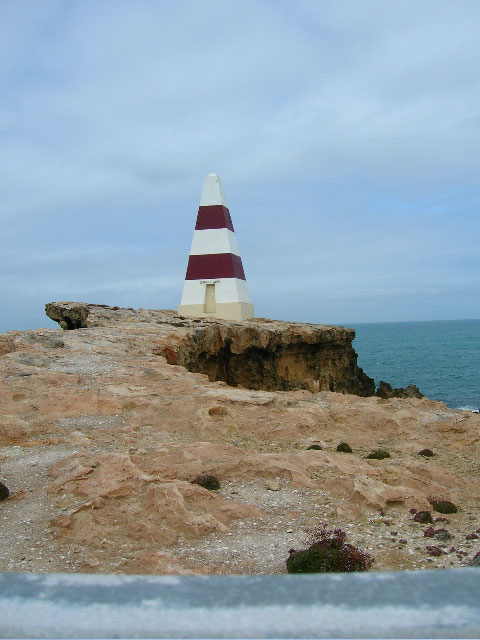
The Obelisk, Robe
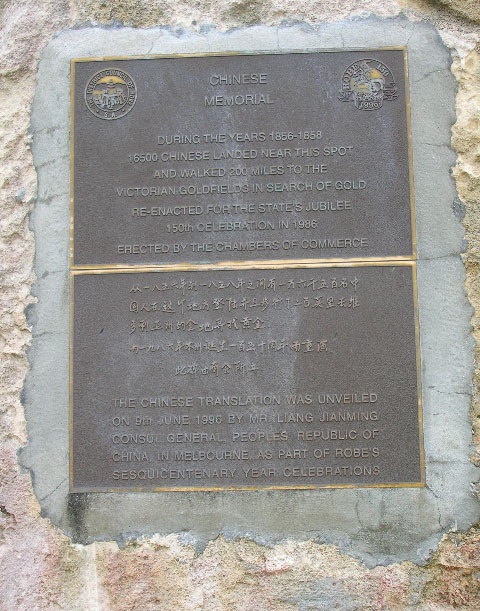
Three days after picking up our rental car, we gratefully turned it
in to the dealership in Adelaide and walked back to our hotel. The
navigator--me--was extremely glad to fold up her maps and prepare for the next phase of our trip: 1800 miles on The Ghan, the train through the Red Centre from Adelaide to Darwin, at The Top End.
Additional source on The Twelve Apostles: http://
www.parkweb.vic.gov.au/1park_display.cfm?park=175
Next up: TravelQuest: Australia -- The Top End, what happens when you travel in "the wet"
Please visit Kay's website, http://www.kaysisk.com and her blog,
http://kaysisk.blogspot.com